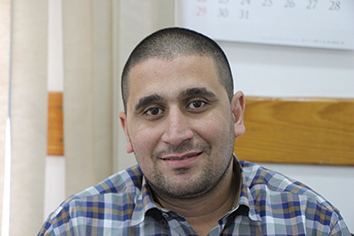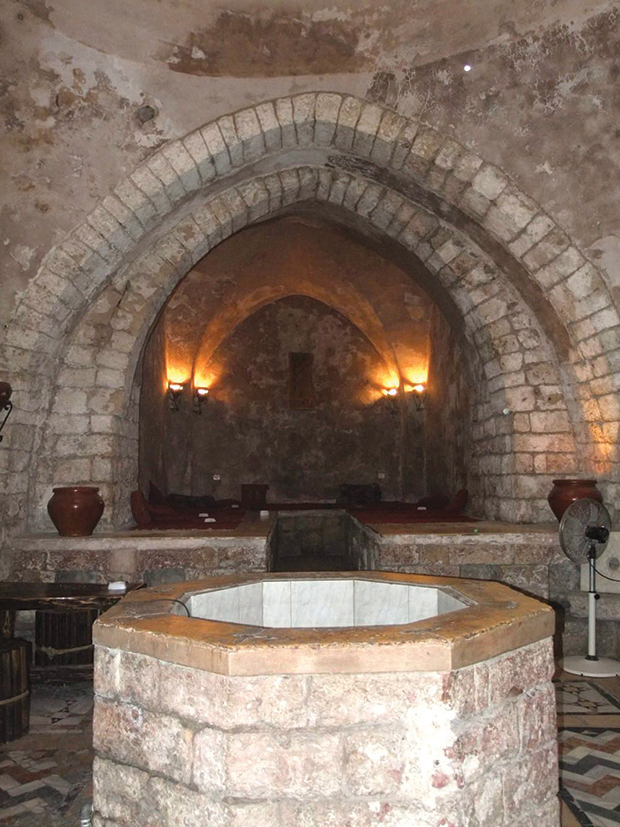In Gaza’s old city, among other inspiring historical locations such as Souq Al-Qaysariyya (the old gold market) and the Great Omari Mosque, stands the only remaining historical Turkish bath in the Gaza Strip, Al-Samara Turkish Bath. According to family elders, it was established more than one thousand years ago, but nobody knows when exactly it was built and by whom. According to a historical plate found at the entrance of the bath, it was renovated around eight hundred years ago by the Egyptian Mamluk king Singer Ben Abdallah.
In the year 2000, Al-Samara Bath was partially renovated in a project supervised by the archaeology department of Gaza’s Islamic University, and over the past years the Al-Wazir family has successfully completed the renovation of all its remaining sections. These efforts have ensured that the bath may better serve its customers, while its historical background and splendour continue to awe and inspire its visitors. The bathing area is heated by a large oven that burns olive wood to heat water that is then spread through a chain of pipes that extend below the bath’s floor.
People from all over the Gaza Strip visit Al-Samara bath daily to enjoy its services that include the bath, relaxation and medical massage, as well as skin cleansing. Clients include persons with medical problems who are encouraged by doctors and physical therapists to visit the bath in order to help alleviate their suffering. Others come here to celebrate the wedding of their friend or family member by gathering and celebrating the groom or bride’s shower bath that traditionally precedes the wedding festivities.
As visitors enter the reception area, they immediately spot an old circular water tub that radiantly underscores the atmosphere of a historical setting. On the far side of the area, a comfortable sitting area invites visitors to take a rest after they finished their bath – this is advised to last for at least ten minutes in order to allow one’s body to accommodate its temperature to outside temperatures, which is especially important in winter.
Visitors then proceed to the changing and massage area, where they change their clothes and may enjoy the services of the massage specialist who also guides them through the bathing process. Finally, bathers reach the bathing area that consists of about a dozen small bath tubs that are used individually. Each tub is connected to two water lines, hot and cold, and holds a bowl that can be used by a bather to pour water over his or her body. The tiled floor of the bath area is hot, and people can lay on it for five to ten minutes to breathe the hot steam that permeates the room and to relax aching bodies and sore muscles.
Around fifty years ago, my grandfather and his brother became the first members of the Al-Wazir family to own Al-Samara Turkish Bath, and it has been inherited since by my father and his brother, sisters, and cousins. Being a part of the family that owns the Bath, gives me the privilege of being able to use it frequently, of which I take advantage especially during the winter, when I love to take a splash before I return home from an exhausting working day. Each time I go, the hot bath makes me feel relaxed, relieved, and ready for a fresh start into the coming day. I am more than happy to be contacted by friends, colleagues, and potential visitors to help them plan a visit to enjoy the services and share in the same relaxing and refreshing experience.
Al-Samara Turkish bath is open daily to the public, and the schedule reserves separate opening hours for male and female customers.



